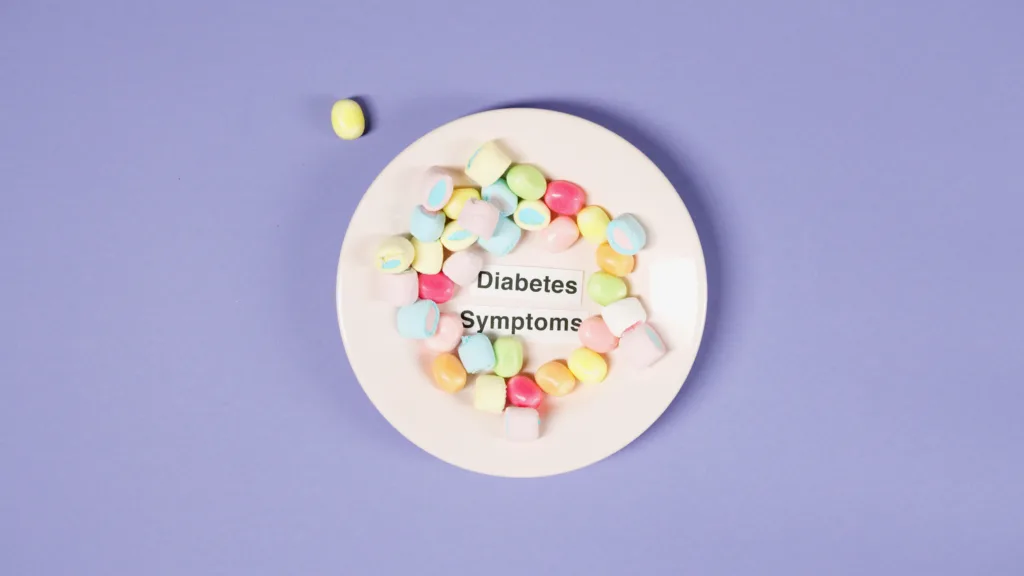Are you struggling with IBS symptoms? Are you overwhelmed by the low FODMAP diet and don’t know where to start? Living with IBS can be difficult and uncomfortable, but there are strategies to help manage your symptoms and get back to feeling your best. In this article, we’ll go over the basics of the low FODMAP diet, what foods you can and cannot eat, and how it can help you manage your IBS symptoms.
The symptoms of Irritable Bowel Syndrome (IBS) can be reduced by following a Low FODMAP Diet. Symptoms that may be alleviated by following a Low FODMAP Diet include abdominal pain, bloating, gas, constipation, and diarrhea.
Benefits of Low FODMAP Diet for IBS Sufferers
IBS (Irritable Bowel Syndrome) is a common condition that affects the large intestine and can cause abdominal pain, bloating, gas, constipation and diarrhea. The root cause of IBS is unknown but it is thought to be related to the sensitivity of the gastrointestinal tract. A low FODMAP diet has been found to be beneficial for people suffering from IBS.
FODMAP stands for fermentable oligosaccharides, disaccharides, monosaccharides and polyols and are short-chain carbohydrates found in certain foods that are poorly absorbed in the digestive system. These carbohydrates can be difficult to digest and can trigger symptoms of IBS such as bloating, gas and abdominal pain. A low FODMAP diet eliminates these foods that are high in FODMAPs.
The key benefits of a low FODMAP diet for IBS sufferers include improved digestive health, reduced bloating and abdominal pain, improved bowel movements and better overall quality of life. The diet has been found to help reduce symptoms in up to 75% of people with IBS who try it.
A low FODMAP diet should be tailored to each individual’s needs as food sensitivities vary from person to person. It is important to work with a qualified healthcare professional or nutritionist when following a low FODMAP diet as it can be tricky to follow correctly without guidance.
Overall, a low FODMAP diet can offer many benefits for people suffering from IBS by eliminating foods that can trigger symptoms while still providing a healthy and balanced diet. With proper guidance from a healthcare professional or nutritionist, following this type of dietary plan may provide relief from the symptoms associated with IBS.
Foods to Avoid on a Low FODMAP Diet for IBS
A low FODMAP diet is becoming increasingly popular as a way to manage irritable bowel syndrome (IBS) and its associated symptoms. Following this diet means avoiding certain types of foods that can be difficult to digest, particularly foods that contain oligosaccharides, disaccharides, monosaccharides, and polyols. These are known as FODMAPs. Below is a list of some of the most common foods to avoid on a low FODMAP diet for IBS:
1. Gluten-containing grains such as wheat, rye, and barley.
Click here to preview your posts with PRO themes ››
2. Dairy products such as milk, yogurt, ice cream, and cheese.
3. High-FODMAP fruits such as apples, pears, peaches, mangoes and watermelon.
4. High-FODMAP vegetables such as garlic, onions, cauliflower and mushrooms.
5. Legumes including lentils, chickpeas and beans.
6. Sweeteners like honey and agave nectar which contain high levels of fructose.
7. Processed foods with added FODMAPs or artificial sweeteners like sorbitol or mannitol which can be difficult to digest for those with IBS.
8 Beverages like beer and wine which contain large amounts of yeast or high fructose corn syrup which can aggravate IBS symptoms in some people.
<
What Foods are Safe to Eat on a Low FODMAP Diet for IBS?
The Low FODMAP diet is a popular dietary approach for managing symptoms of irritable bowel syndrome (IBS). Foods high in fermentable oligosaccharides, disaccharides, monosaccharides, and polyols (FODMAPs) are believed to cause digestive discomfort in people with IBS. By avoiding these foods, people with IBS can reduce symptoms such as bloating, gas, abdominal pain, and diarrhea.
The Low FODMAP diet has three phases: elimination, challenge and reintroduction. During the elimination phase, all high-FODMAP foods are avoided for at least two weeks. This helps to establish a baseline of symptom relief. Then, during the challenge phase, specific high-FODMAP foods are added back one at a time to assess individual tolerance levels. Finally, during the reintroduction phase, only low-FODMAP foods are consumed in order to maintain symptom control.
So what foods should be avoided on the Low FODMAP diet? High-FODMAP foods include onions and garlic; wheat products such as breads and pastas; certain fruits such as apples and pears; legumes like beans and lentils; dairy products like milk and cheese; certain sweeteners like honey and fructose; certain vegetables such as broccoli and cauliflower; artificial sweeteners like sorbitol; mushrooms; and certain nuts like cashews.
On the other hand, low-FODMAP foods include bananas and oranges; gluten-free grains such as quinoa or rice; lean proteins like fish or chicken; eggs; potatoes; leafy greens such as lettuce or spinach; strawberries or blueberries; carrots or peppers; olives or cucumbers; sugar-free beverages like herbal tea or water; olive oil or coconut oil for cooking ; butter or ghee ;and certain nuts like macadamias or almonds .
By following the Low FODMAP diet carefully and avoiding high-FODMAP foods while eating more low-FODMAP alternatives , people with IBS can often find relief from their symptoms without having to resort to medication .
Introduction to Low FODMAP Diet
A low FODMAP diet is a type of dietary plan that eliminates certain foods known as FODMAPs, which are types of carbohydrates. FODMAP stands for Fermentable Oligo-, Di-, Mono-saccharides and Polyols. These carbohydrates are often poorly absorbed in the small intestine and can cause symptoms such as abdominal pain, bloating, and gas in people with irritable bowel syndrome (IBS). By eliminating these foods from your diet, you can reduce your IBS symptoms and improve your overall digestive health.
Benefits of Following a Low FODMAP Diet
Following a low FODMAP diet can provide several benefits for people with IBS, including reduced bloating, abdominal pain, and gas. Additionally, it can help to regulate bowel movements and improve overall digestive health. Research has also shown that following a low FODMAP diet may reduce stress and anxiety associated with IBS.
How to Follow a Low FODMAP Diet for IBS
If you have been diagnosed with IBS, the first step is to speak with your doctor or nutritionist about starting a low FODMAP diet. Your doctor or nutritionist will be able to provide you with personalized advice on which foods to avoid and which ones are safe to consume. Generally speaking, the low FODMAP diet involves avoiding high-FODMAP foods such as onions, garlic, apples, wheat products, dairy products, beans, legumes, mushrooms, artificial sweeteners, and certain fruits and vegetables. It is important to note that some of these foods may be eaten in moderation if they do not cause any digestive distress.
Click here to preview your posts with PRO themes ››
It is also important to keep track of any foods that cause digestive distress so you can avoid them in the future. Additionally, it is important to eat plenty of healthy foods such as fruits and vegetables while avoiding processed or high-fat items such as chips or cookies. Lastly, it is important to drink plenty of water throughout the day as this will help keep your digestion regular and reduce any gastrointestinal discomfort.

Managing Symptoms of IBS with a Low FODMAP Diet
Irritable bowel syndrome (IBS) is a chronic digestive disorder that can cause abdominal pain, cramping, bloating, gas, constipation, and diarrhea. While the exact cause of IBS is not known, diet plays an important role in managing its symptoms. A low FODMAP diet has been found to be helpful for people with IBS.
FODMAP stands for Fermentable Oligosaccharides, Disaccharides, Monosaccharides and Polyols. These are a group of short-chain carbohydrates that are found in many common foods such as wheat, dairy products, legumes and certain fruits and vegetables. For people with IBS, these carbohydrates can be difficult to digest and can lead to symptoms such as abdominal discomfort, bloating and gas.
A low FODMAP diet eliminates or significantly reduces the amount of FODMAPs you consume in order to reduce symptoms of IBS. It involves eliminating most foods that contain high levels of FODMAPs for several weeks or months and then gradually reintroducing them back into your diet one at a time to determine which foods are triggers for your particular symptoms. The goal is to find the right balance of FODMAPs in your diet that will help control your IBS symptoms while still allowing you to enjoy a varied diet.
Although it can be challenging to follow a low FODMAP diet at first, it can be very helpful in managing your IBS symptoms over the long term. Talk to your doctor or nutritionist about whether this type of diet may be right for you and how to get started on it.
Tips for Eating Out on a Low FODMAP Diet for IBS
Eating out on a low FODMAP diet can be challenging, but it doesn’t have to be impossible. Here are some tips to help make eating out easier and more enjoyable:
1. Plan ahead. Look at the menu online before you go so you know what options are available, and decide what you want beforehand. This will make ordering much easier.
2. Ask questions. Don’t be afraid to ask your server about ingredients or preparation methods. Most restaurants will be happy to accommodate your dietary needs if they know what they are in advance.
3. Be adventurous. While it’s important to stick to the Low FODMAP guidelines, don’t be afraid to try new things! There may be some dishes that contain ingredients that are high in FODMAPs, but may still be worth giving a try if the portion size is small enough.
Click here to preview your posts with PRO themes ››
4. Bring snacks. If you’re worried about not finding anything suitable on the menu, it can help to bring some safe snacks with you just in case. This way, you won’t go hungry even if there aren’t any suitable options available at the restaurant.
5. Don’t forget dessert! Just because you’re following a Low FODMAP diet doesn’t mean you can’t enjoy dessert too! Many restaurants offer delicious low-FODMAP options such as sorbet or fruit juice-based drinks like spritzers or cocktails with no added sugar or artificial sweeteners – just make sure to double-check ingredients first!
1. Not Seeking Professional Guidance
One of the most common mistakes made when following the Low FODMAP Diet for IBS is not seeking professional guidance. It is important to consult with a registered dietitian or nutritionist before starting the diet, as it can be quite complex and individualized to each person’s symptoms. A qualified professional will be able to tailor the diet to your specific needs and provide guidance on how best to implement it.
2. Not Keeping Track of FODMAP Intakes
Another mistake people often make when following a Low FODMAP Diet is not keeping track of their FODMAP intake. This is essential in order to determine which FODMAPs are causing symptoms and should be avoided. Keeping a food diary or journal can help you keep track of your dietary intake and any associated symptoms. Additionally, using an app or online resource that provides detailed information on various foods can be helpful in tracking your FODMAP intake.
3. Not Reading Food Labels Carefully
Reading food labels carefully is also essential when following a Low FODMAP Diet for IBS, as many processed and packaged foods may contain hidden sources of high FODMAP ingredients such as inulin, honey, agave, and high fructose corn syrup. Be sure to read labels carefully and avoid foods that may contain these ingredients if they are known triggers for your IBS symptoms.
4. Eating Too Much Fruit
Many people make the mistake of eating too much fruit when following a Low FODMAP Diet for IBS, as some fruits are high in naturally occurring FODMAPs such as fructose and sorbitol. It’s important to limit your intake of these fruits or swap them out for low-FODMAP alternatives in order to avoid triggering unwanted symptoms.
5. Eating Too Many Processed Foods
Eating too many processed foods is another common mistake made on a Low FODMAP Diet for IBS sufferers. While there are some processed products that are low in FODMAPs (e.g., gluten-free breads), these should generally be consumed sparingly due to their higher fat and sugar content which can exacerbate symptoms for some people with IBS. It’s best to focus on whole foods such as fresh fruits and vegetables, lean proteins, healthy fats, legumes, nuts, seeds etc., which provide more nutritional benefits than processed products do .

Conclusion
A low FODMAP diet is a safe and effective way to reduce IBS symptoms. It has been proven to help reduce abdominal pain, bloating, and diarrhea in many sufferers. However, it is important to remember that a low FODMAP diet should be consulted with a healthcare professional prior to implementation. Additionally, it is important to note that while some people find relief from IBS symptoms on this diet, others may not see the same results. Lastly, as with any diet, it is always important to ensure proper nutrition is being met through an adequate and balanced intake of foods.
The low FODMAP diet can provide relief for many individuals suffering from IBS symptoms. It is important to speak with your healthcare provider if you are considering this approach in order to ensure it is the right choice for you and your individual needs. With proper guidance and thoughtful planning, the low FODMAP diet may be able to provide relief for those looking for an alternative approach to managing IBS symptoms.

